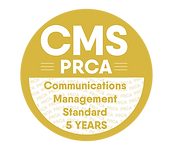Report shows MLAs getting to grips with social media – but room for improvement!
21 October 2016 - by Gráinne WalshA report commissioned by Stratagem has highlighted a marked departure in how politicians are engaging with their constituents and wider audiences.
The report, entitled Connected Politicians, considered the digital footprint of MLAs departing in the last mandate, and looked at website and social media usage.
It showed that 92 out of the total 108 MLAs in the Assembly by the end of the last mandate had a Facebook profile, whilst 90 had a Twitter account, 84 of which had been active in the previous month at the time the research was carried out.
The report also found that Nationalist MLAs had more followers than Unionist representatives, and that MLAs not affiliated to the main five parties had much larger followings than MLAs within these parties.
Stratagem Head of Consultancy, Gráinne Walsh said:
“The findings in the report chart the huge role that social media plays in how politicians themselves communicate and campaign. The move towards digital communications has meant that politicians can communicate with a much larger audience than ever before which brings opportunities as well as potential pitfalls. Being so accessible, MLAs face the growing challenge of managing this themselves as opposed to by their staff, who traditionally manage much of the casework that comes into constituency offices.
“It is also interesting to note that the trend shows that social media and the traditional forms of constituency engagement don’t really cross over. MLAs are, by and large, treating online and face to face activity as separate activities.”
Report author, Alan Meban added:
“Although we have seen a very definite move towards embracing all things digital, only 51% of all MLAs at the end of the last mandate had a personal website, with just 20% of these designed to display well on mobile devices that are increasibgly used.”
“Some of the websites we found through the report were outdated, both in terms of style and content, which suggests that social media is now the preferred online presence. Easy to use, engaging content can be produced quickly and with decreasing money for office expenditure, it is certainly the most cost-efficient option.”
Key Findings:
- Independents and MLAs with single representation scored highly in terms of digital footprint
- Four out of the top ten online MLAs retired or lost their seat after the last election
- The digital footprint for female MLAs was higher than that of their male counterparts
- South Belfast, South Down and Foyle were the most “connected” constituencies, whilst Fermanagh & South Tyrone, West Belfast and East Londonderry had the lowest digital footprint
- Only 20 per cent of MLA websites were responsive to different devices
- No email or contact forms were available for eight MLAs – seven of which were from Sinn Féin, one UUP
- Sam Gardiner and Kieran McCarthy (both whom have stepped down) had no online presence apart from on their party websites
- Opening hours of MLA offices were available online for 58 MLAs
- Information on regular surgeries were available for 11 MLAs online – all of whom were Unionist
- 90 of the outgoing MLAs had Twitter profiles
- 92 had Facebook profiles
- Single party representatives had much larger followings than individual MLAs (with a few exceptions) in the “big five” parties
- Nationalist MLAs had more followers on average than Unionist MLAs
- Sinn Féin had almost double the number of followers than the UUP
- Longevity – and not youth – brings more followers
- 51 outgoing MLAs had personal websites, but only 22 of these were returned in the top search result








